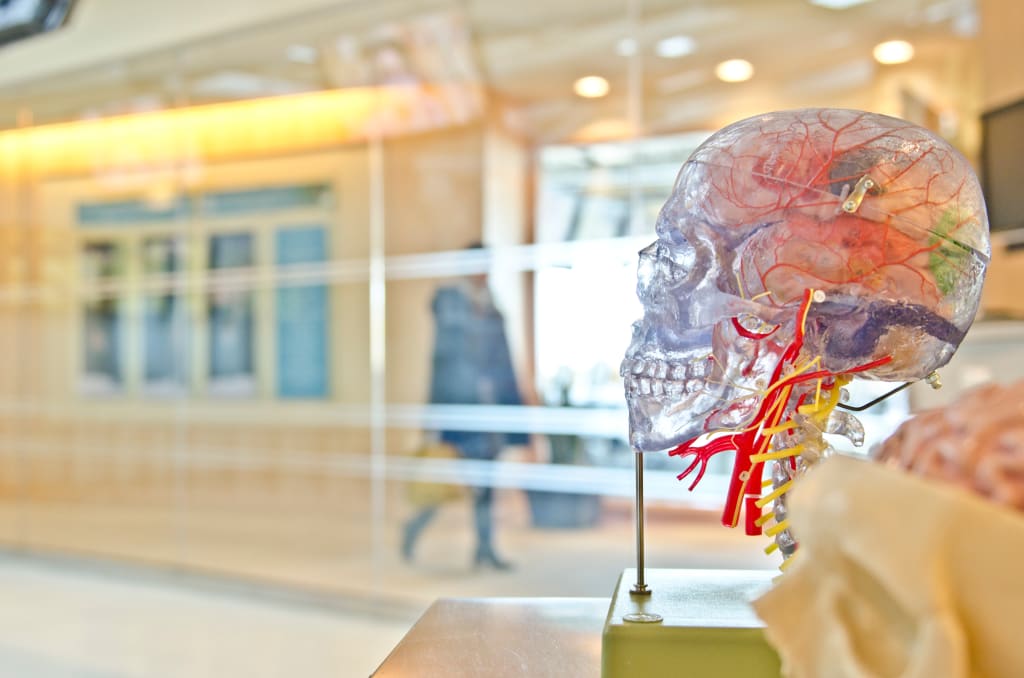
Evolution is a funny thing, isn't it? It manifests in countless ways and is influenced by countless different scenarios. It loves to take its time to get things right but does not always succeed. What is interesting to me though is not physical evolution, but the evolution of the mind.
The mind is the is the key to the treasure chest that unlocks our future as a species, but are we training it right? Many of us would argue that the level of education and the quality of teaching is better than it has ever been. I would agree with that statement 100 percent. We are in a very good position with regards to education compared to previous generations. But while attempts continue to refine the education process, I would also argue that refinement is not what is needed to take education to that next level, but redesign.
Why? Well first consider that we are still using the same basic classroom structure of having a teacher stand at the front of the class inspiring knowledge onto their class of 30 or so students and then asking them to regurgitate that information through either speech or writing.
This process has remained identical for well over a century now. So if education has continued to improve with each generation, what exactly about it is broken then?
To be more accurate, education is not so much broken as it is missing crucial components to encouraging the learning process.So how are we learning in schools? As simply as possible, the school system divides knowledge into a series of subjects, and for each subject, the student sits down and takes in information and the subject through note taking and then practices the application of the newly learned content through written challenges, group discussions, and regurgitation of information to prove that they have understood the concept.
Then, to ensure the knowledge is maintained, homework is set for students to complete and then check that the homework has been completed for the next lesson.
How does the brain want to learn?
The human brain is a remarkable piece of organic machinery that does a great job of operating even when it's not being used to its full extent. That said, the human brain accounts for over 20 percent of the energy required for the whole human body and tires easily when concentration is required for a significant amount of time.
The pomodoro effect was invented by a student called Francesco Cirillo in the 1980s. This is a simple yet effective style of learning based on the brain's natural ability to focus in short bursts. The general idea is to work for up to 25 minutes on a single task. Any more than 25 and the human brain begins to tire and becoming more easily distracted. After 25 minutes, the student will stop and rest for a period of around three to four minutes.
During this period, the brain should focus on something else entirely while it encodes what has been learned in those 25 minutes. Then once the rest period has ended a new study period of up to 25 minutes begins. Once the cycle has been repeated several times, the rest break extends to a 15 - 20 minute period before returning back to the cycle of learning.
Twenty five minutes represents the upper bounds here so some people like myself may go with shorter study periods for even more benefit.
This technique has proven fully successful for those who have tried it such as myself, because the brain does not want to focus on task for a period of time beyond 25 minutes. This is a key problem with the educational system that has lessons averaging a full hour in schools and even longer at university level.
The art of using visual mnemonics:
An even bigger issue presented by the education system is the way in which it expects students to absorb information. We teach children the fundamentals of reading, writing, and problem solving at an early age and then build on these core skills through multiple subjects such as English, Mathematics, and Science.
Creativity of modern teaching offers students the opportunity to learn things from multiple perspectives. What is learned in these lessons is always of great value and the way it is presented to students continues to improve with new innovations in the classroom.
So what's the issue? Consider your position when you were revising for your exams like I did many years ago now. How did you study? What was your learning process like? How much of the content were you revising and how much of it had you just completely forgotten? Did you take regular breaks to process the information?
If I am being honest, my revision schedule involved me reading chapters word by word several times over to try and memorize the content while taking notes that summarise what has been read so that I can go over those notes at a latter stage. The problem here is located in my original processing of the information.
Taking notes is an extremely valuable and beneficial tool to learning and revising, but I am trying to learn words and phrases here. Without making the appropriate connections in the brain to help store this information, we struggle to keep it in our long term memory. Why? Because the brain tries to be as efficient as possible, and any information that it deems unimportant is eventually discarded to make way for new information, even when there is still a lot of memory space in storage.
The solution lies in learning how the brain is designed to learn, through memory. Our brains are constructed by billions of tiny little clusters known as neurons. These neurons are connected together by synapses that form what can be visualised as a hive network, where the brain works by sending electrical signals throughout this network.
It is those neurons that store our memories and everyone that we know. In order to decide what information needs to be maintained and what can be discarded, the memories with stronger connections are the ones that are more likely to remain.
What does this have to do with modern learning? Well most of the information given to students comes in the form of written or spoken words. But the brain can't create strong connections for those words alone. Visual examples are a more powerful way of creating strong connections. Children's books are a great example of this as they have pictures to convey the meaning of the written words. Note that the pictures don't replace the words in these books, but act as an additional source of information that strengthens those connections in the brain.
By creating stronger connections, we increase the likelihood of storing information into the brain's working (immediate comprehension) memory. By creating more connections, we increase the likelihood of storing information in our short term memory.
For long term memory, a combination of variety and repetition is the key to being able to cement any knowledge gained. The current state of education does, to an extent, encourage this. But it does not go far enough in its attempts to create an environment where students can utilise the potential of their brains. Much of what is learned in school is quickly forgotten because the connections made are too weak or too few for the human brain to determine that the information is worth keeping.
To change this, we need to create a system in schools where learning is not a teach once, revise latter process. But rather a pathway of learning from working memory to short term to long term memory that is more consistent, engaging, and insightful.
Want to learn about 3D modelling for games and animations? Try our new site for courses on blender 3D and get started on learning a brand new skill today.About the Creator
Joe Baily
Teacher of 3D applications such as blender, maya, 3Ds max as well as 2D applications such as adobe photo shop. Over 8000 students worldwide teaching over 11 online course.






Comments
There are no comments for this story
Be the first to respond and start the conversation.